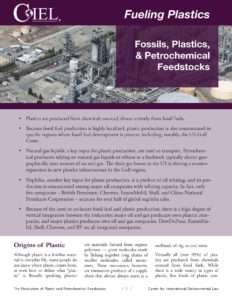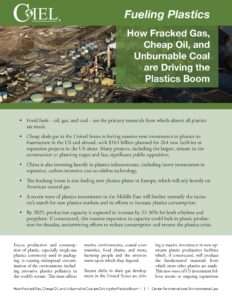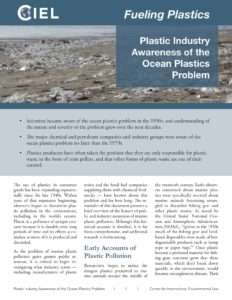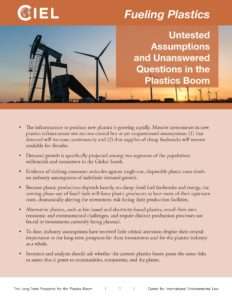Launched on September 20th, 2017, Fueling Plastics, an ongoing investigative series, examining the deep linkages between the fossil fuels and plastics industries and the products they produce, and exposing how the US shale gas boom fuels a massive buildout of plastics infrastructure in the United States and beyond. In the wake of Hurricane Harvey, and the release of air pollutants and toxic substances from petrochemical facilities across the Gulf region, these reports shed new light on the harmful impacts of fossil fuels at every stage of their lifecycle.
| Fossils, Plastics, and Petrochemical Feedstocks outlines the role of fossil fuels in plastics production, detailing how over 99% of plastics are produced from chemicals sourced from fossil fuels. Because fossil fuel production is highly localized to specific areas, plastics production is also concentrated in specific regions where fossil fuel development is present, especially in the US Gulf Coast. Because plastics production is part of the fossil fuels supply chain, many fossil fuel companies own plastics producers and many plastics companies own fossil fuel operations. | |
| How Fracked Gas, Cheap Oil, and Unburnable Coal are Driving the Plastics Boom warns of the enormous influx of investment to expand or construct new petrochemical facilities in the Gulf. The availability of cheap shale gas in the United States is fueling a massive wave of new investments in plastics infrastructure in the US and abroad, with $164 billion planned for 264 new facilities or expansion projects in the US alone, and spurring further investment in Europe and beyond. In as little as five years, these investments could increase global plastics production capacity by a third, driving companies to produce ever greater volumes of plastics for years to come. In so doing, this wave of investment increases pollution risks to frontline communities throughout the plastics supply chain and directly undermines efforts by cities, countries, and the global community to combat the growing plastics crisis. | |
| Plastic Industry Awareness of the Ocean Plastics Problem reveals the evolution of industry’s awareness of the problem of plastic pollution in the ocean. Scientists became aware of the ocean plastics problem in the 1950s, and understanding of the nature and severity of the problem grew over the following decades. By no later than the 1970s, the major chemical and petrochemical companies and industry groups were also aware of the problem. Originally, the plastics industry ignored the issue, claiming that it was merely cosmetic. Now industry acknowledges the problem, though they promote reuse and recycling while fighting local regulation of plastic products. | |
| Untested Assumptions and Unanswered Questions in the Plastics Boom raises new and significant questions about the economic rationale for the massive wave of new infrastructure investments for plastics and petrochemicals. Companies investing in plastics are counting on plastic infrastructure being profitable for decades to come. But changes in the economy, government regulations, and consumer attitudes worldwide could make these investments much riskier than previously assumed. | |




